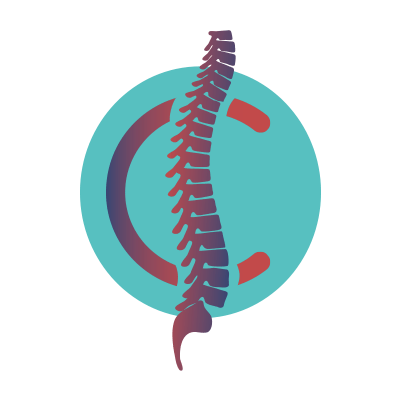Epidural Steroid Injection
Our team at Citrus Spine Institute specializes in performing epidural steroid injections. Learn how this minimally invasive procedure can help alleviate your neck and lower back pain.

What Is Epidural Steroid Injection?
Epidural steroid injections (ESI) are a standard, minimally invasive procedure that has been used for decades. These injections are a conservative, non-surgical treatment option for pain in the cervical and lumbar spine. ESIs help decrease the inflammation around your nerves in order to ease pain and discomfort and, in turn, help improve your quality of life and comfort.

Learn More About Epidural Steroid Injections
What Are the Benefits of Epidural Steroid Injections?
Cervical and lumbar ESIs can decrease spinal nerve inflammation and pain, which helps improve your quality of life and comfort. Many doctors recommend ESIs because they are low-risk and minimally invasive while also an effective form of pain relief. Epidural injections can relieve pain for a few months and up to a year after the procedure.
What Are the Signs That You May Need an Epidural Steroid Injection?
While everyone is different, you should consider an ESI if you have lower back or neck pain, pressure on your sciatic nerve or pain that radiates down your legs or into your arms.
You may be a good candidate for an ESI if you have been dealing with ongoing neck or lower back pain for more than six weeks or have one of the following conditions:
- Degenerative disc disease
- Herniated discs
- Radiculopathy (sciatica)
- Spinal stenosis
- Spondylolisthesis
If you aren’t sure what condition your back pain is linked to, consult with a spinal specialist. They will be able to give you a proper diagnosis and decide whether or not an ESI is the right course of treatment.

The Citrus Spine Difference
For us, the patient remains the king, in everything that we do.
01
02
03
04
How Should You Prepare for an Epidural Steroid Injection?
Before you receive an ESI, talk to your healthcare provider about medications you are currently taking, especially blood thinners. You will also need to let your doctor know if you are or might be pregnant. You may need to stop consuming certain medications, supplements, and herbs several days before your injection to reduce the risk of bleeding and bruising.
For more information, read this resource: Preparing for Spinal Injections.
What Does the Epidural Steroid Injection Process Look Like?
The entire ESI process takes about 10 minutes—these are outpatient procedures performed under a live X-Ray (fluoroscopy).
The typical steps involved in an ESI include:
- You change into a medical gown and lie face down on an X-ray. If this is painful, you can sit up or lie on your side.
- Your doctor will clean the injection site with betadine and mark it. They may apply numbing cream to the injection site or inject a local anesthetic into the underlying tissues to help numb the area. They may also give you medicine to help you relax.
- Your doctor will locate the correct vertebrae with the live X-ray to help guide the needle. Then, they will insert the fluoroscopy-guided epidural spinal needle into the injection site.
- Contrast dye is then released into the epidural space to check the spread of the injected contents. Once this is confirmed through the dye, the steroid is injected into the epidural space.
- After the injection, you are observed for 15 to 20 minutes to ensure everything is as it should be.
You may experience mild burning, a tingling sensation or a feeling of pressure as the steroid enters the epidural space. This discomfort will usually disappear after a few minutes.
What Is the Recovery Process After an Epidural Steroid Injection?
Here are some common things you may experience after your spinal injections:
- You may have immediate pain relief, however, it can take up to two weeks for the steroids to take full effect.
- You may notice your pain gets worse for two to three days after your ESI before it starts to improve—this is normal as steroids typically take a few days to kick in.
- Patients typically have a full range of motion and can resume regular activity the day after their procedure.
- You may experience soreness at the injection site—this should only last a few hours. You can take a mild analgesic like Tylenol or ice the area for 20 minutes to relieve discomfort.
Most patients can walk around and leave the doctor’s office shortly after ESIs. While it is rare, you could potentially experience temporary weakness or numbness in the legs afterward. You may also be given medicine that causes drowsiness. Because of this, it’s best to have someone drive you home.
Schedule a follow-up appointment after your procedure to document its efficacy and address any concerns or changes.
What Are the Risks and Side Effects of an Epidural Steroid Injection?
ESIs are known to be a safe, low-risk procedure, however, with any medical procedure, there are always some risks and potential side effects. You may experience some temporary short-lived side effects including, but not limited to:
- Dizziness
- Headache
- Fainting
- Flushing of the face
- Nausea
- Post-injection soreness
You could also experience more serious issues, like dural punctures, spinal cord damage, stroke, brain or nervous system issues, difficulty breathing (if the injection is done in the cervical region), allergic reactions, nerve root damage, or infection in and around your spine. Discuss your risk of complications with your healthcare provider.

.jpg)
What to Know Before an Epidural Steroid Injection
Back pain relief from ESIs is not permanent and does not help every kind of back pain. You may have pain relief for up to a year, but it doesn’t cure the cause of your back pain. It’s important to speak with a spinal specialist to get to the root cause of your back pain and find a long term solution.
Wondering If Epidural Steroid Injection Is Right for You?
The first step to discovering if an epidural steroid injection is the best option for you is to talk to a spinal specialist. One of our experienced healthcare providers will help you find the best treatment plan for your unique condition. Schedule a consultation today to see if an epidural steroid injection is right for you.

Contact Us
6099 W. Gulf to Lake Hwy
Crystal River, FL 34429

As a boutique medical practice offering non-surgical and surgical treatment options for spine patients, we provide white-glove service paired with trusted expertise.
Copyright © 2020 Citrus Spine Institute. All rights reserved.
